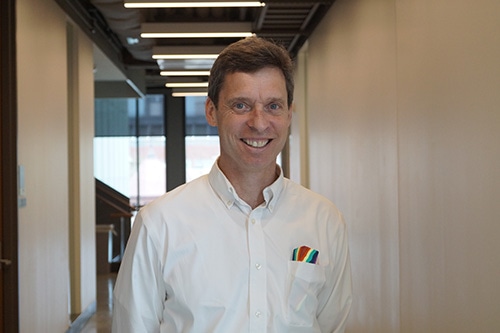Apr 23 2019
The ability of superconductors to conduct electricity without any resistance is due to Cooper pairs—electron pairs that join together to skate unobstructed through a material.
 Jim Valles. (Image credit: Brown University)
Jim Valles. (Image credit: Brown University)
In 2007, researchers from Brown University made the mind-blowing revelation that Cooper pairs also occur in insulating materials, assisting in blocking the current flow instead of allowing it. Currently, the same lab group has discovered the forces that play a part in these “Cooper pair insulators.”
In a study reported in Physical Review Letters, the scientists demonstrate that in the insulating state, the repulsive interactions between the Cooper pairs themselves hold the pairs in check, and not any disorder in the material’s atomic lattice. This information could be vital to design devices or materials that exploit the superconducting-insulating transition—a superconducting switch, for instance.
Essential to electronics is manipulating how electrons flow, so finding new ways in which electrons flow leads to new manipulation methods for implementation in novel devices. This work gives us new information about Cooper pair propagation, which could be helpful in manipulating them in new devices.
Jim Valles, Professor of Physics, Brown University
Valles is also the senior author of the study.
In the 2007 study, Valles and his team conducted experiments on thin films made of amorphous bismuth. Although thick blocks of amorphous bismuth exhibit superconductivity, when they are pared down into slices with a thickness of only a few atoms, the material turns into an insulator.
In the initial study by Valles and his team, it was observed that Cooper pairs—named after Brown physicist Leon Cooper, who won a Nobel prize for describing their dynamics—occurred in these films. However, rather than moving freely similar to what they do in the superconducting phase, the Cooper pairs in the films were cast away on tiny islands inside the material, lacking the ability to hop to the next island. Yet, it was not evident which forces were holding the pairs in place. That is precisely what Valles and his team intended to find with the new research.
The charge of the Cooper pairs could be one possibility for what holds them in place. Each pair has a strong negative charge, and particles with the same charge repel each other. Chances are that a Cooper pair finds it difficult to hop to the next island since that island is already conquered by another Cooper pair that pushes back. This leads to a charge-related traffic jam that blocks current from traveling through the material.
Valles and his team intended to investigate that scenario. As part of their research, gadolinium atoms were sprinkled into the atomic structure of the bismuth insulators. Since gadolinium is magnetic, the magnetism weakens Cooper pair coupling—possibly causing them to disintegrate into individual electrons.
Even if only a few Cooper pairs disintegrated for an instant, some island space could be freed up and room could be given to intact pairs to hop. Therefore, if more pairs start hopping upon adding more gadolinium, it would be evident that resistance in these materials is created by this charge-related traffic jam. This is precisely what the experiments demonstrated.
It’s this combination of those little islands in the films and the barriers between those islands created by the repulsive interaction of the Cooper pairs that gives rise to this resistance.
Jim Valles, Professor of Physics, Brown University
Researchers have been able to preclude other factors that might contribute to the resistance for the first time. One more probability was a phenomenon called Anderson localization, which is brought about by disorder in a material’s structure.
Anderson effects could be crucial at temperatures close to absolute zero, where they contribute to an increasingly exotic state called superinsulation, where the resistance turns infinite. However, at comparatively higher temperatures, this research reveals that the charge plays a vital role instead. This could have implications for designing innovative electronic devices—maybe superconducting switches for logic gates.
It’s possible we could get a low-temperature switch out of this. Or if we could get this behavior out of a high-temperature superconductor, we might get a higher-temperature version, which might have even more practical use.
Jim Valles, Professor of Physics, Brown University
Xue Zhang, James C. Joy, Chunshu Wu, Jin Ho Kim, and J. M. Xu are Valles’ co-authors on the study. The National Science Foundation (DMR-1307290, DMR-1408743) and the Air Force Office of Scientific Research supported the study.